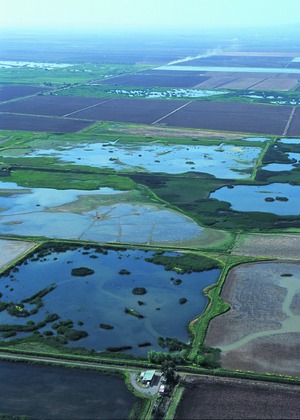
With a newly issued final regulation, the Environmental Protection Agency and Army Corps of Engineers are seeking to end years of uncertainty over which streams, wetlands and other bodies of water fall under federal jurisdiction and which are governed by the states.
But the rule, which the agencies signed on May 27, has by no means eased a long-raging storm of criticism from industry groups and some members of Congress. Industry officials say that opponents are likely to try to block or undo the regulation in the courts. If that comes to pass, construction firms still will face a murky regulatory landscape when it comes to water.
The issue is of keen interest to contractors because it determines when they need to obtain a Corps permit to build in or around certain waters.
The rule has been one of the Obama administration's most closely watched regulations, drawing praise from environmental organizations and their congressional allies and fierce attacks from critics in industry and on Capitol Hill.
In a statement, President Obama said, "This rule will provide the clarity and certainty businesses and industry need about which waters are protected by the Clean Water Act, and it will ensure polluters who knowingly threaten our waters can be held accountable." Groups such as the Natural Resources Defense Council welcomed the rule.
But House Speaker John Boehner (R-Ohio) slammed the agencies' action as "a raw and tyrannical power grab that will crush jobs."
The regulation, which redefines what qualifies as "Waters of the United States" under the Clean Water Act, takes effect 60 days after it appears in the Federal Register. Opponents are likely to fight in Congress and the courts to block the rule.
The U.S. Supreme Court already has taken a crack at defining federal water jurisdiction in decisions issued in 2001 and 2006. But those rulings haven't seemed to settle the issue, which helped prompt the latest EPA-Corps attempt to clear things up.
Jonathan Deason, a senior adviser with Dawson & Associates, Washington, D.C., says a court challenge to the new rule is 100% certain. It could take years for a case to travel through district and appellate courts and maybe back to the High Court. For construction firms, the result would be "a lot of uncertainty," Deason says. He adds, "Projects that perhaps otherwise would be built, won't be built. It'll have a jobs impact."
Congress has plunged into the debate. The House on May 12 passed a bill that would direct the agencies to scrap the regulation and start over. In the Senate, a bill to revise the rule was introduced on April 30.
Though Boehner and other critics contend EPA and the Corps went too far, the agencies said, "The scope of jurisdiction in this rule is narrower than that under the existing regulation." For example, they say it "puts important qualifiers on some existing categories, such as tributaries." Among other things, tributaries are defined as having "indicators of flow"—a bank, beds and ordinary high-water levels.
EPA Administrator Gina McCarthy says the agencies made "substantial changes" from their April 2014 proposal. For example, the final rule specifies measurements for determining which waters are "adjacent" to other federally regulated waters—such as those that are navigable or interstate—and, thus, also are covered.
McCarthy told reporters the final version retains and expands current agricultural exclusions and exemptions from federal regulation. It excludes "ephemeral" ditches that are not tributaries. But the American Road & Transportation Builders Association isn't satisfied with those provisions. It said they include "myriad ... qualifications" before a ditch can be judged exempt. ARTBA added, "Such a piecemeal approach will only lead to increased confusion and delays" and to opponents' using the rule to file lawsuits to halt transportation projects.





Post a comment to this article
Report Abusive Comment